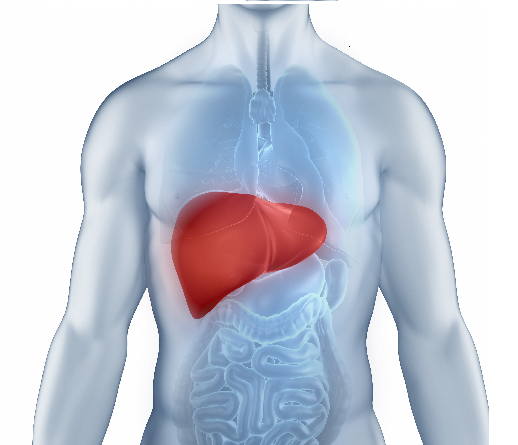A Comprehensive Guide to Pneumonia: Understanding Causes, Risk Factors, and Management
Pneumonia is an infection that targets the respiratory system, specifically the lungs. It causes inflammation in the air sacs, known as alveoli, where gas exchange occurs. This inflammation can result in the air sacs filling with fluid or pus, making it difficult to breathe and causing a range of symptoms based on the cause and severity of the infection.
What are the Types of Pneumonia?
Pneumonia can manifest differently depending on the causative agent and the individual’s health status. Common types include:
- Community-acquired Pneumonia (CAP): Acquired outside hospitals caused by bacteria, viruses, or fungi.
- Hospital-acquired Pneumonia (HAP): Develops during hospitalisation, often from antibiotic-resistant bacteria.
- Aspiration Pneumonia: Results from inhaling food, liquid, or vomit into the lungs.
- Atypical Pneumonia: Milder symptoms caused by pathogens like Mycoplasma pneumoniae, Chlamydia pneumoniae, and Legionella pneumophila.
What are the Causes of Pneumonia?
Pneumonia can be caused by various microorganisms, like bacteria, viruses, fungi, and parasites. The most common pneumonia causes differ based on age, health status, and environmental factors:
- Bacterial Pneumonia: Often caused by Streptococcus pneumoniae, but other bacteria such as Haemophilus influenzae and Staphylococcus aureus can also be culprits.
- Viral Pneumonia: Typically caused by influenza viruses, respiratory syncytial virus (RSV), and coronaviruses.
- Fungal Pneumonia: Resulting from inhaling fungi found in soil or bird droppings, such as Histoplasma, Cryptococcus, and Coccidioides species.
What are the Risk Factors of Pneumonia?
Pneumonia risk increases due to several factors:
- Age: Infants, young children, and older adults are most vulnerable.
- Medical Conditions: Chronic diseases like asthma, COPD, diabetes, and heart disease weaken the immune system.
- Smoking: Damages the lungs’ natural defences against infections.
- Immune Suppression: Medications, chemotherapy, HIV/AIDS, or other conditions that weaken the immune system.
- Hospitalisation: Especially for surgeries or prolonged stays, increasing exposure to bacteria and potential infections.
What are the Complications of Pneumonia?
Complications of pneumonia can range from mild to severe, depending on the health of the individual and the specific pathogens involved:
- Respiratory Failure: Severe pneumonia can lead to difficulty breathing and the need for mechanical ventilation.
- Sepsis: Infection spreads to the bloodstream, causing widespread inflammation and organ failure.
- Lung Abscess: A pocket of pus forms in the lung tissue, requiring drainage or surgical intervention.
- Pleural Effusion: Fluid accumulates around the lungs, impairing breathing and requiring drainage.
What are the Symptoms of Pneumonia?
The symptoms of pneumonia can vary but commonly include:
- Cough: Often producing mucus (sputum) that may be green, yellow, or bloody.
- Fever: Sometimes high, accompanied by sweating and chills.
- Breathing Difficulties: Rapid breathing, shortness of breath, especially with exertion.
- Chest Pain: Sharp or stabbing pain that worsens with coughing or deep breathing.
- Fatigue: Feeling unusually tired or weak.
- Nausea, Vomiting, or Diarrhoea: Particularly in children.
How is Pneumonia Diagnosed?
Test for pneumonia typically involves a combination of clinical evaluation, imaging studies, and laboratory tests:
- Physical Examination: Physicians use a stethoscope to listen to the lungs and check for abnormal breath sounds. They may assess other symptoms such as fever and cough.
- Chest X-ray: An imaging test that can reveal areas of inflammation or consolidation in the lungs, helping to confirm the diagnosis.
- Blood Tests: They include a complete blood count (CBC) and blood cultures to identify the specific organism causing the infection, especially in severe or complicated cases.
How can Pneumonia be Treated and Prevented?
The approach to treating pneumonia varies based on the underlying cause and the severity of the infection.
- Bacterial Pneumonia: Typically treated with antibiotics. The choice of antibiotic is determined by the type of bacteria suspected and local resistance patterns. Common antibiotics include penicillin, cephalosporins, and macrolides.
- Viral Pneumonia: A doctor may recommend antiviral medications for influenza and other specific viruses. Supportive care for fever and pain relief is also important.
- Fungal Pneumonia: Requires antifungal medications. Severe cases may necessitate hospitalization for intravenous antifungal therapy and supportive care.
Preventing pneumonia involves several strategies:
- Vaccination: Vaccines are available to prevent some of the most common pneumonia causes, including pneumococcal and influenza vaccines.
- Hand Hygiene: Frequent handwashing effectively reduces the transmission of viruses and bacteria.
- Healthy Lifestyle: Eating a balanced diet, exercising regularly, not smoking, and managing chronic conditions can strengthen the immune system.
- Avoiding Exposure: Limiting exposure to smoke, pollutants, and individuals with respiratory conditions can reduce the risk of pneumonia.
Pneumonia is a frequent and potentially severe infection of the lungs that can affect individuals of all ages and health statuses. For anyone experiencing symptoms like persistent cough, fever, or difficulty breathing, seeking medical attention is essential to ensure timely treatment and recovery. Book a pneumonia test with Dr Lal PathLabs for an accurate diagnosis.
FAQs
1. Is pneumonia very serious?
Yes, pneumonia can be severe, especially for those with weakened immune systems or chronic illnesses, older adults, and young children.
2. What are the 4 stages of pneumonia?
The four stages of pneumonia are congestion, red hepatisation, grey hepatisation, and resolution, each representing different phases of lung tissue inflammation and healing.














